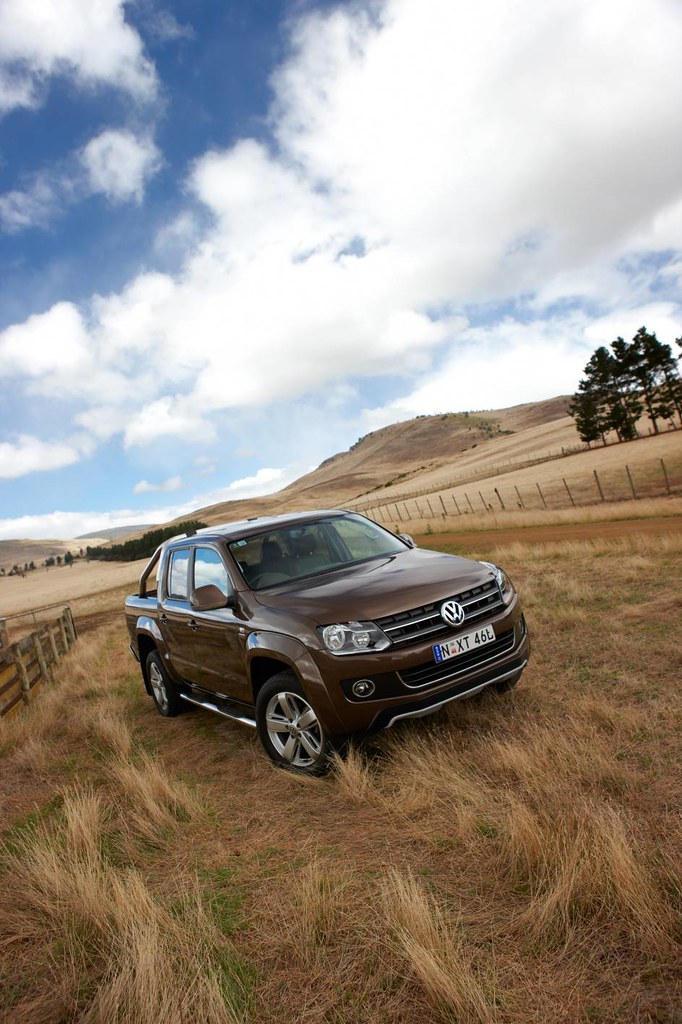
The 1950s stand tall as a glorious epoch in automotive history, a golden age where designers, engineers, and dreamers converged to forge machines of breathtaking beauty, raw power, and undeniable swagger. Fresh from the austerity of World War II, a revitalized America, brimming with optimism and ingenuity, saw its automakers unleash a torrent of innovation. The roads transformed into runways for vehicles draped in shiny chrome, boasting audacious tailfins, and flaunting bold, curvaceous lines that truly captured the heart of an era.
This was a period where the automobile transcended mere transportation, becoming a profound symbol of identity, independence, and the burgeoning American dream. As families ventured into new suburban landscapes and highways sprawled across the nation, car culture flourished. Drive-in theaters, the sight of carhops on roller skates, and the ritual of Sunday road trips became woven into the fabric of everyday life, forever cementing the car as a centerpiece of American aspirations and leisure.
Many of these magnificent creations from the ’50s continue to inspire awe and admiration today, their legacy enduring in the hearts of collectors and enthusiasts alike. These aren’t just vehicles; they are rolling sculptures, testaments to a time when design dared to be dramatic and engineering pushed boundaries. Join us as we journey through the first chapter of these unforgettable rides, each a definitive piece of automotive artistry that shaped the legend of the 1950s.
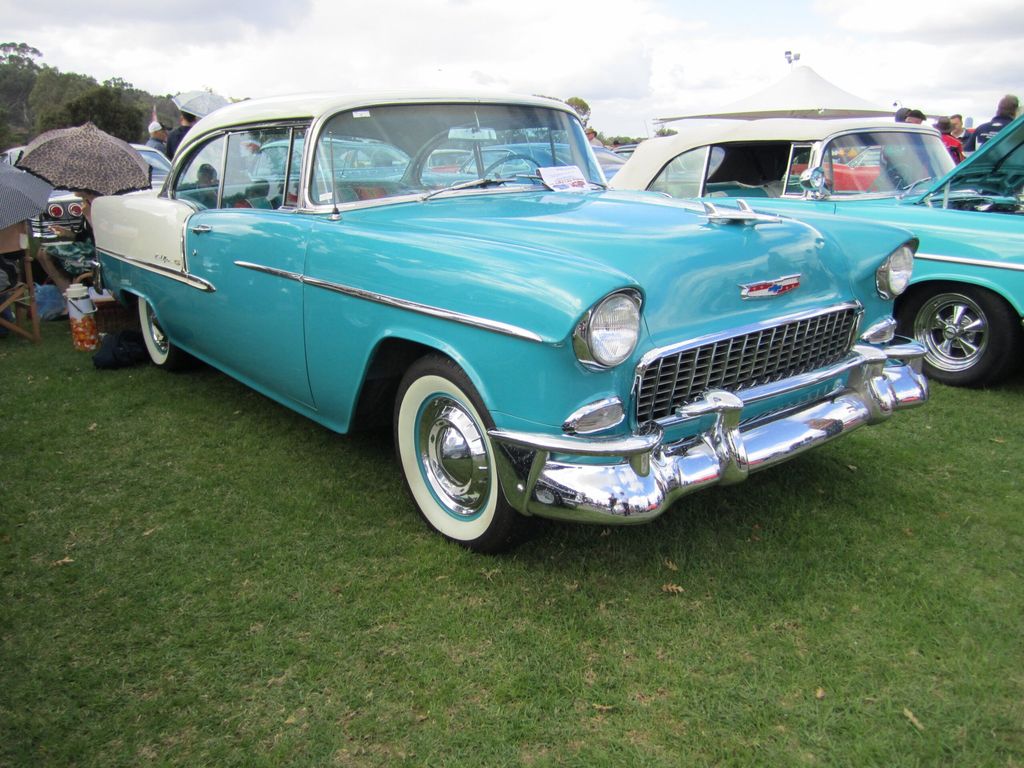
1. **1955 Chevrolet Bel Air**Few automobiles evoke the spirit of the 1950s with the same vibrancy as the 1955 Chevrolet Bel Air. With its distinctive two-tone paint schemes and an abundance of gleaming chrome trim, it quickly ascended to the status of a dream car for countless suburban American families. This wasn’t just a mode of transport; it was a statement of progress and prosperity in the optimistic post-war years.
The Bel Air was more than just a pretty face; it combined modern styling with substantial performance and comfort. Beneath its sleek hood, it offered a powerful V8 engine, complemented by the convenience of power steering. Its unmistakable tailfin flair, though modest compared to later designs, contributed significantly to its cool factor, making it a favorite among teenagers eager to cruise the streets.
Its roomy interior made it a practical choice for families, while its overall aesthetic embodied the era’s enthusiasm for new possibilities. The Bel Air perfectly symbolized the prevailing optimism, blending everyday usability with an undeniable sense of modern chic. Today, this iconic Chevrolet remains a highly sought-after classic, cherished by collectors for its vintage charm and the legendary status it so rightfully earned.
Car Model Information: 2024 Ford F-150 XLT
Name: Chevrolet Bel Air
Caption: 1957 Chevrolet Bel Air convertible
Manufacturer: Chevrolet
Production: 1949–1980
ModelYears: 1950–1981
Class: Full-size
Layout: FR layout
Predecessor: Chevrolet Fleetline,Chevrolet Biscayne
Successor: Chevrolet Impala
Categories: 1950s cars, 1960s cars, 1970s cars, 1980s cars, Articles with short description
Summary: The Chevrolet Bel Air is a full-size car produced by Chevrolet for the 1950–1981 model years. Initially, only the two-door hardtops in the Chevrolet model range were designated with the Bel Air name from 1950 to 1952. With the 1953 model year, the Bel Air name was changed from a designation for a unique body shape to a premium level of trim applied across a number of body styles. The Bel Air continued with various other trim level designations, and it had gone from a mid-level trim car to a budget fleet sedan when U.S. production ceased in 1975. Production continued in Canada, for its home market only, through the 1981 model year.
Get more information about: Chevrolet Bel Air
Buying a high-performing used car >>>
Brand: Chevrolet Model: Bel Air
Price: $41,604 Mileage: 9,645 mi.
Read more about: 7 Iconic ’60s Classics: Unpacking the Million-Dollar Appeal of Automotive Legends
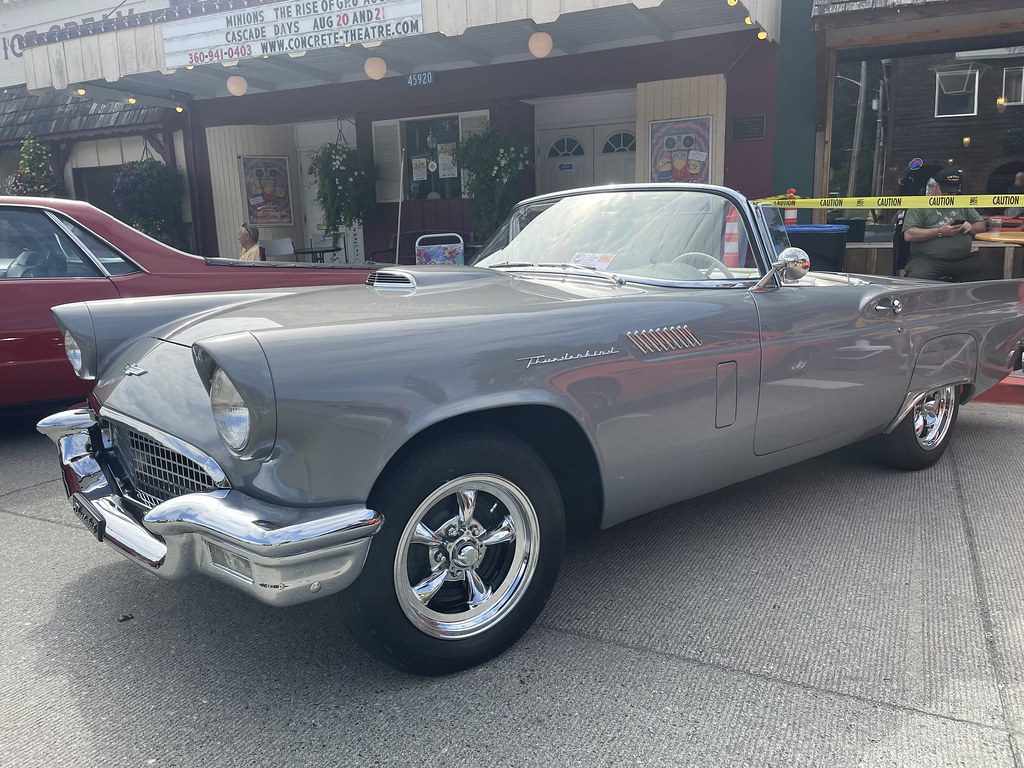
2. **1957 Ford Thunderbird**The 1957 Ford Thunderbird emerged as Dearborn’s compelling response to Chevrolet’s Corvette, and what a magnificent retort it proved to be. This sleek convertible perfectly fused luxury with potent American muscle, quickly establishing itself as a standout vehicle. It offered a personal luxury experience that resonated deeply with drivers seeking both performance and panache.
Powering this sophisticated machine was a robust V8 engine, delivering exhilarating performance that truly belied its elegant exterior. Design flourishes, such as the distinctive porthole windows, added an extra layer of flair to an already remarkable silhouette, ensuring it turned heads wherever it roamed. The Thunderbird was crafted to offer an exquisite blend of sportiness and refined sophistication.
Beyond its striking looks and impressive power, the 1957 Thunderbird also heralded a new focus on driver comfort and safety. It notably featured a padded dashboard, among other thoughtful safety innovations, marking a progressive step in automotive design. This car was not just about speed and style; it was about elevating the entire driving experience to an art form, securing its place as a truly legendary vehicle of its time.
Car Model Information: 2003 Ford Thunderbird Premium
Name: Ford Thunderbird
Caption: 1957 Thunderbird
Manufacturer: Ford Motor Company
Production: unbulleted list
ModelYears: unbulleted list
Class: unbulleted list
Layout: Front-engine, rear-wheel drive layout
Categories: 1960s cars, 1970s cars, 1980s cars, 1990s cars, 2000s cars
Summary: The Ford Thunderbird is a personal luxury car manufactured and marketed by Ford Motor Company for model years 1955 to 2005, with a hiatus from 1998 to 2001.
Ultimately gaining a broadly used colloquial nickname, the T-Bird, the model was introduced as a two-seat convertible, subsequently offered variously in a host of body styles including as a four-seat hardtop coupe, four-seat convertible, five-seat convertible and hardtop, four-door pillared hardtop sedan, six-passenger hardtop coupe, and five-passenger pillared coupe, before returning in its final generation, again as a two-seat convertible.
At its inception, Ford targeted the two-seat Thunderbird as an upscale model. The 1958 model year design introduced a rear seat and arguably marked the expansion of a market segment that came to be known as personal luxury cars, positioned to emphasize comfort and convenience over handling and high-speed performance.
Get more information about: Ford Thunderbird
Buying a high-performing used car >>>
Brand: Ford Model: Thunderbird
Price: $14,300 Mileage: 49,430 mi.
Read more about: From Big Screen Brawls to TV Triumphs: 15 Legendary Harley-Davidsons That Conquered Hollywood

3. **1953 Buick Skylark**The 1953 Buick Skylark was conceived as a grand celebration of Buick’s 50th anniversary, and it delivered on that promise with an unparalleled degree of elegance and exclusivity. This limited-edition beauty was a true convertible, meticulously crafted with wire wheels and classic whitewall tires that underscored its prestige. Buick truly spared no expense in its creation.
Its design was a symphony of curvy lines and a low stance, granting it a sporty yet refined aesthetic that immediately set it apart. This commitment to distinctive styling was matched by formidable performance, as a powerful V8 engine ensured a remarkably smooth and strong ride. The Skylark was undeniably a prestige car, built for those discerning individuals who desired to make a grand statement.
Each detail of the Skylark, from its hand-built body to its opulent interior, spoke volumes about luxury and meticulous craftsmanship. It represented the zenith of American automotive artistry in the early 1950s, embodying exclusivity and sophisticated elegance. Today, it remains a prized collectible, a vivid reminder of Buick’s golden era of design and ambition.
Car Model Information: 1972 Buick Skylark Custom
Name: Buick Skylark
Caption: 1972 Buick Skylark
Manufacturer: Buick
ModelYears: 1953–1954,1961–1972,1975–1998
Layout: FR layout,Front-engine, front-wheel-drive layout
Successor: Buick Century
Categories: 1980s cars, 1990s cars, All articles with unsourced statements, Articles with short description, Articles with unsourced statements from June 2018
Summary: The Buick Skylark is a passenger car formerly produced by Buick. The model was made in six production runs, during 46 years, over which the car’s design varied dramatically due to changing technology, tastes, and new standards implemented over the years. It was named for the species of bird called skylark.
The Skylark name first appeared on a limited production luxury convertible using the Buick Roadmaster’s chassis for two years, then was reintroduced in 1961 as a higher luxury content alternative to the entry-level Buick Special on which the Skylark was based upon. It was then positioned as Buick’s luxury performance model when the Buick GSX was offered. As GM began downsizing during the late 1970s, the Skylark became the entry-level model when the Special nameplate was used as a trim package designation, then in the 1980s was offered as a front-wheel-drive vehicle where it was both a coupe and sedan for three different generations.
Get more information about: Buick Skylark
Buying a high-performing used car >>>
Brand: Buick Model: Skylark
Price: $29,000 Mileage: 97,176 mi.
Read more about: Unraveling America’s Automotive Ancestry: A Deep Dive into the Oldest Car Brands That Shaped a Nation’s Roads
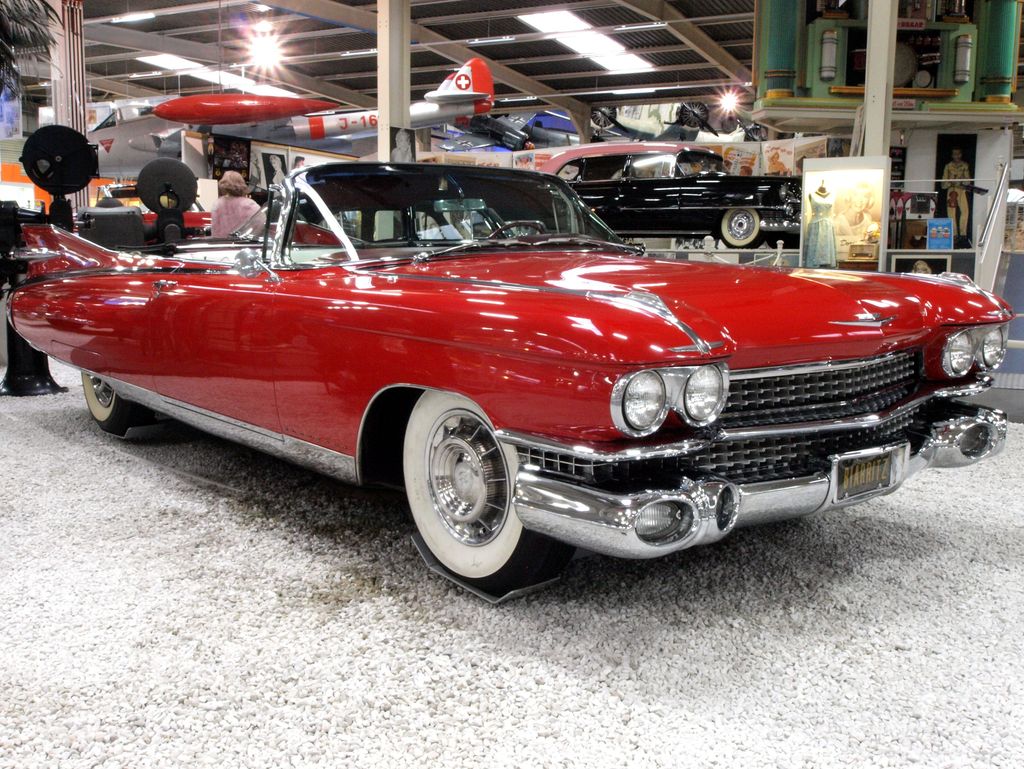
4. **1959 Cadillac Eldorado**When one speaks of automotive drama and unrestrained extravagance from the 1950s, the 1959 Cadillac Eldorado immediately springs to mind. This luxury cruiser was a bold declaration on wheels, commanding attention with its utterly massive tailfins and striking bullet taillights that were designed to turn heads everywhere it appeared. It was the height of automotive flamboyance.
The Eldorado’s allure wasn’t merely superficial; beneath its lavish exterior lay a wealth of advanced features and robust power. It boasted a formidable V8 engine and came equipped with “power everything,” from windows to steering, ensuring a ride of effortless luxury. The interior was equally opulent, featuring plush leather seats, automatic transmission, and an advanced air suspension system that provided an exceptionally smooth journey.
Owning an Eldorado in 1959 was akin to driving the future, wrapped in an audacious package of gleaming chrome and quintessential Cadillac class. It symbolized the pinnacle of American automotive opulence and daring style, pushing the boundaries of what a production car could be. Its legendary status is firmly cemented, a testament to a decade that celebrated grand statements and unbound optimism.
Car Model Information: 1976 Cadillac Eldorado Convertible
Caption: 1963 Cadillac Eldorado Convertible
Name: Cadillac Eldorado
Manufacturer: Cadillac
Production: 1952–2002
Layout: Front-engine, rear-wheel-drive layout
Aka: Cadillac Fleetwood Eldorado
Class: Personal luxury car
Successor: Cadillac CTS
Categories: 1960s cars, 1970s cars, 1980s cars, 1990s cars, 2000s cars
Summary: The Cadillac Eldorado is a luxury car manufactured and marketed by the Cadillac Motor Car Division of General Motors from 1952 until 2002, over twelve generations.
The Eldorado was at or near the top of the Cadillac product line. The original 1953 Eldorado convertible and the Eldorado Brougham models of 1957–1960 had distinct bodyshells and were the most expensive models offered by Cadillac during those years. The Eldorado was never less than second in price after the Cadillac Series 75 limousine until 1966. Beginning in 1967, the Eldorado retained its premium position in the Cadillac price structure, but was manufactured in high volumes on a unique, two-door personal luxury car platform.
The Eldorado carried the Fleetwood designation from 1965 through 1972, and was seen as a modern revival of the pre-war Cadillac V-12 and Cadillac V-16 roadsters and convertibles.
Get more information about: Cadillac Eldorado
Buying a high-performing used car >>>
Brand: Cadillac Model: Eldorado
Price: $29,499 Mileage: 31,898 mi.
Read more about: Rev Up Your Engines! These 14 Stars Boast Jaw-Dropping, Priceless Classic Car Collections
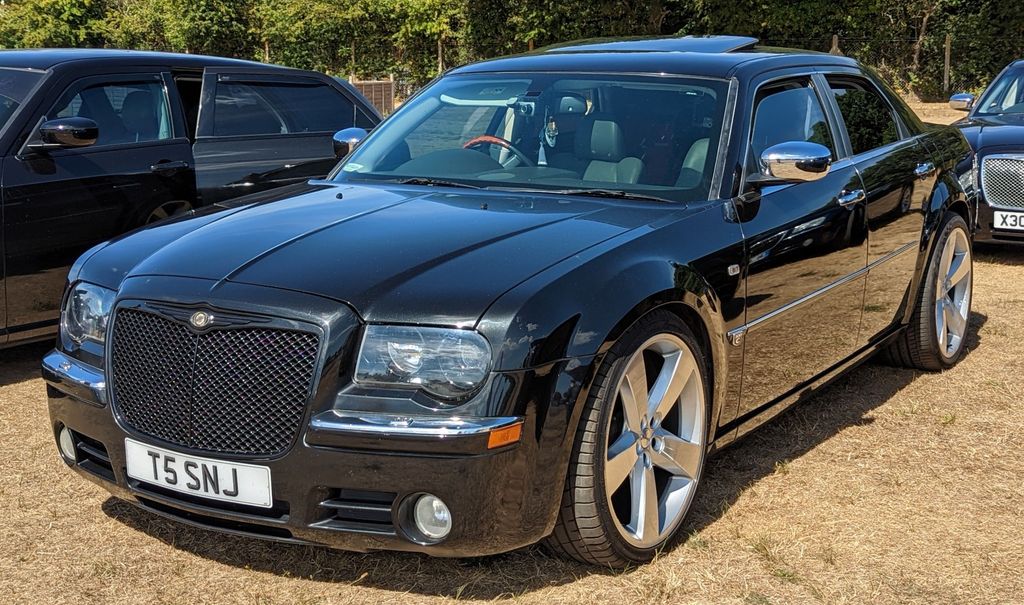
5. **1957 Chrysler 300C**Often heralded as a foundational progenitor of the American muscle car, the 1957 Chrysler 300C was a vehicle of immense power and understated authority. MotorTrend aptly dubbed it the “hottest of the hot crop of supercars,” a testament to its formidable performance capabilities. This machine was born from Chrysler’s successful NASCAR racers, bringing track-proven prowess to the street.
Under its sleek hood lay a mighty 392-cubic-inch (6.4-liter) Hemi-head V8 engine, equipped with dual carburetors. In its standard configuration, this powerhouse delivered an impressive 375 horsepower, with a high-output version pushing it to an even more astounding 390 horsepower. Such raw power was cloaked in an understated design, making it a formidable choice for racers and gearheads alike.
The 300C was not just about brute force; it incorporated innovative engineering for enhanced performance. Air scoops beneath the headlights provided crucial cooling air for the front brake drums, while a stiffened suspension system ensured superior handling. Inside, drivers were treated to supportive leather bucket seats and a purposeful, no-nonsense dashboard, affirming that every aspect of this car was geared towards power and prestige. The 300C played a pivotal role in igniting the muscle car craze that would define the following decade.
Car Model Information: 2016 Chrysler 300C Platinum
Categories: All set index articles, Articles with short description, Set index articles on cars, Short description is different from Wikidata
Summary: The Chrysler Corporation has used the designation Chrysler 300C to refer to two separate unrelated vehicles from different eras:
The 1957 Chrysler 300C is that year’s version of the Chrysler 300 “letter series”; a large, high-performance luxury coupe sold in very limited numbers.
The 2005 Chrysler 300C, launched in 2004, the top-of-the-line Chrysler 300, usually outfitted with a 5.7L Hemi V8 Magnum engine.
Get more information about: Chrysler 300C
Buying a high-performing used car >>>
Brand: Chrysler Model: 300C
Price: $16,157 Mileage: 100,592 mi.
Read more about: The Definitive History: Unpacking the Revolutionary Journey of the First Car with Factory Standard Disc Brakes

6. **1950 Oldsmobile Rocket 88**The 1950 Oldsmobile Rocket 88 holds a significant place in automotive lore, considered by many historians to be the very first true muscle car. It was a revolutionary blend of raw power and agile design, combining a lightweight body with a high-compression V8 engine. This potent combination unleashed a level of speed and performance previously unseen in an everyday production vehicle.
The Rocket 88’s influence transcended the automotive world, making such a profound cultural impact that rock and roll fans famously sang about it. It was a car that embodied the youthful exuberance and burgeoning energy of the new decade. With remarkable ease, it could reach speeds of 100 mph, a thrilling and impressive feat for its time, truly making everyday driving an exciting proposition.
This groundbreaking Oldsmobile was instrumental in paving the way for future performance models, setting new standards for what a production car could achieve. Its innovative engineering and cultural resonance ensured its place as a legend, a pioneer that forever altered the landscape of American automotive design and performance, marking the beginning of the horsepower era.
Car Model Information: 2024 Ford F-150 XLT
Name: Oldsmobile 88
Caption: 1996 Oldsmobile Eighty Eight LS
Manufacturer: Oldsmobile
ModelYears: 1949–1999
Class: Full-size car
Layout: FR layout
Predecessor: Oldsmobile L-Series
Successor: Oldsmobile Aurora
Categories: 1940s cars, 1950s cars, 1960s cars, 1970s cars, 1980s cars
Summary: The Oldsmobile 88 (marketed from 1989 on as the Eighty Eight) is a full-size car that was produced by the Oldsmobile Division of GM from 1949 until 1999. From 1950 until 1974, the 88 was the division’s most popular line, particularly the entry-level models such as the 88 and Dynamic 88. The 88 series was also an image leader for Oldsmobile, particularly in the model’s early years (1949–51), when it was one of the best-performing automobiles, thanks to its relatively small size, light weight, and advanced overhead-valve high-compression V8 engine. This engine, originally designed for the larger and more luxurious C-bodied 98 series, also replaced the straight-8 on the smaller B-bodied 78. With the large, high performance Oldsmobile Rocket V8, the early Oldsmobile 88 is considered by some to be the first muscle car.
Naming conventions used by GM since the 1910s for all divisions used alphanumeric designations that changed every year. Starting after the war, Oldsmobile changed their designations and standardized them so that the first number signified the chassis platform, while the second number signified how many cylinders. A large number of variations in nomenclature were seen over this long model run — Super, Golden Rocket, Dynamic, Jetstar, Delta, Delmont, Starfire, Holiday, LS, LSS, Celebrity, and Royale were used at various times with the 88 badge, and Fiesta appeared on some station wagons in the 1950s and 1960s. The name was more commonly shown as numerals in the earlier years (“Delta 88”, for example) and was changed to spell out “Eighty Eight” starting in 1989.
Get more information about: Oldsmobile 88
Buying a high-performing used car >>>
Brand: Oldsmobile Model: Rocket 88
Price: $41,604 Mileage: 9,645 mi.
Read more about: Unraveling America’s Automotive Ancestry: A Deep Dive into the Oldest Car Brands That Shaped a Nation’s Roads

7. **1954 Kaiser Darrin**The 1954 Kaiser Darrin stands out as one of the most uniquely styled automobiles of its era, captivating onlookers with its truly quirky design elements. Foremost among these were its remarkable sliding doors, which ingeniously disappeared into the front fenders. This innovative feature alone made it an instant conversation starter and a testament to bold, unconventional thinking.
Beyond its distinctive doors, the Darrin was also a pioneer as one of the first American fiberglass sports cars, directly competing with the early iterations of the Corvette. Penned by the renowned designer Dutch Darrin, its aesthetic was equally striking, characterized by a long, elegant nose, a unique grille that broke from convention, and a soft-top roof that completed its sporty profile.
Despite its limited production run, the Kaiser Darrin left an indelible mark on automotive history. It was celebrated as a creative and gutsy newcomer in a market dominated by more traditional designs, proving that innovation and distinctiveness could carve out a niche, even if on a smaller scale. Its legacy is one of daring design and a testament to pushing the boundaries of what was considered conventional.
As we journey deeper into the golden age of automotive design, the narrative shifts from foundational American icons to a broader tapestry of refined luxury, track-dominating prowess, bold stylistic experiments, and the burgeoning international influence that collectively cemented the 1950s as an unparalleled epoch. These vehicles not only pushed the boundaries of engineering but also became profound statements of progress, individuality, and a global appreciation for motoring excellence. Each of the following legends offers a unique perspective on how the decade truly redefined what a car could be.
Read more about: Old School Cool: 10 Cars From the Fabulous ’50s That Still Stop Traffic and Steal Hearts

8. **1957 Chevrolet Corvette**America’s sports car truly found its definitive footing in 1957, transforming from a stylish roadster into a serious contender on the performance stage. This model year marked a pivotal moment, as Chevrolet infused the Corvette with substantial upgrades that made it an undeniable force, both on the street and on the track. It was no longer just about turning heads with its sleek fiberglass body, but about delivering exhilarating power and precise handling.
Beneath its elegantly sculpted hood, the 1957 Corvette introduced a significant leap forward with the addition of fuel injection and a potent 283-horsepower engine. This powerhouse, coupled with its lightweight fiberglass construction, provided drivers with genuine muscle, elevating the driving experience to new heights. The car’s curves, in all the right places, combined with this newfound potency, resonated strongly with a growing community of racing fans and performance enthusiasts alike.
Indeed, the 1957 Corvette’s enhanced performance garnered considerable attention, particularly among those who appreciated its serious athletic capabilities. It meticulously set the stage for decades of high-performance legends that would follow, laying down a formidable legacy that continues to inspire. This iteration of the Corvette became a symbol of American engineering prowess, proving that domestic automakers could produce sports cars capable of competing on a global level.
Car Model Information: 2004 Chevrolet Corvette Base
Name: Chevrolet Corvette
Caption: 2021 Chevrolet Corvette C8
Manufacturer: Chevrolet
Production: 1953–present
ModelYears: bulleted list
Assembly: bulleted list
Class: Sports car
BodyStyle: coupé
Layout: Front-engine, rear-wheel-drive layout,Rear mid-engine, rear-wheel-drive layout
Categories: 1950s cars, 1960s cars, 1970s cars, 1980s cars, 1990s cars
Summary: The Chevrolet Corvette is a line of American two-door, two-seater sports cars manufactured and marketed by General Motors under the Chevrolet marque since 1953. Throughout eight generations, indicated sequentially as C1 to C8, the Corvette is noted for its performance, distinctive styling, lightweight fiberglass or composite bodywork, and competitive pricing. The Corvette has had domestic mass-produced two-seater competitors fielded by American Motors, Ford, and Chrysler; it is the only one continuously produced by a United States auto manufacturer. It serves as Chevrolet’s halo car.
In 1953, GM executives accepted a suggestion by Myron Scott, then the assistant director of the Public Relations department, to name the company’s new sports car after the corvette, a small, maneuverable warship. Initially, a relatively modest, lightweight 6‑cylinder convertible, subsequent introductions of V8 engines, competitive chassis innovations, and rear mid-engined layout have gradually moved the Corvette upmarket into the supercar class. In 1963, the second generation was introduced in coupe and convertible styles. The first three Corvette generations (1953–1982) employed body-on-frame construction, and since the C4 generation, introduced in 1983 as an early 1984 model, Corvettes have used GM’s unibody Y‑body platform. All Corvettes used front mid-engine configuration for seven generations, through 2019, and transitioned to a rear mid-engined layout with the C8 generation.
Initially manufactured in Flint, Michigan, and St. Louis, Missouri, the Corvette has been produced in Bowling Green, Kentucky, since 1981, which is also the location of the National Corvette Museum. The Corvette has become widely known as “America’s Sports Car.” Automotive News wrote that after being featured in the early 1960s television show Route 66, “the Corvette became synonymous with freedom and adventure,” ultimately becoming both “the most successful concept car in history and the most popular sports car in history.”
Get more information about: Chevrolet Corvette
Buying a high-performing used car >>>
Brand: Chevrolet Model: Corvette
Price: $22,999 Mileage: 29,579 mi.
Read more about: Gone But Not Forgotten: Unearthing the Stories Behind 14 Iconic American Cars That Drove Off into the Sunset
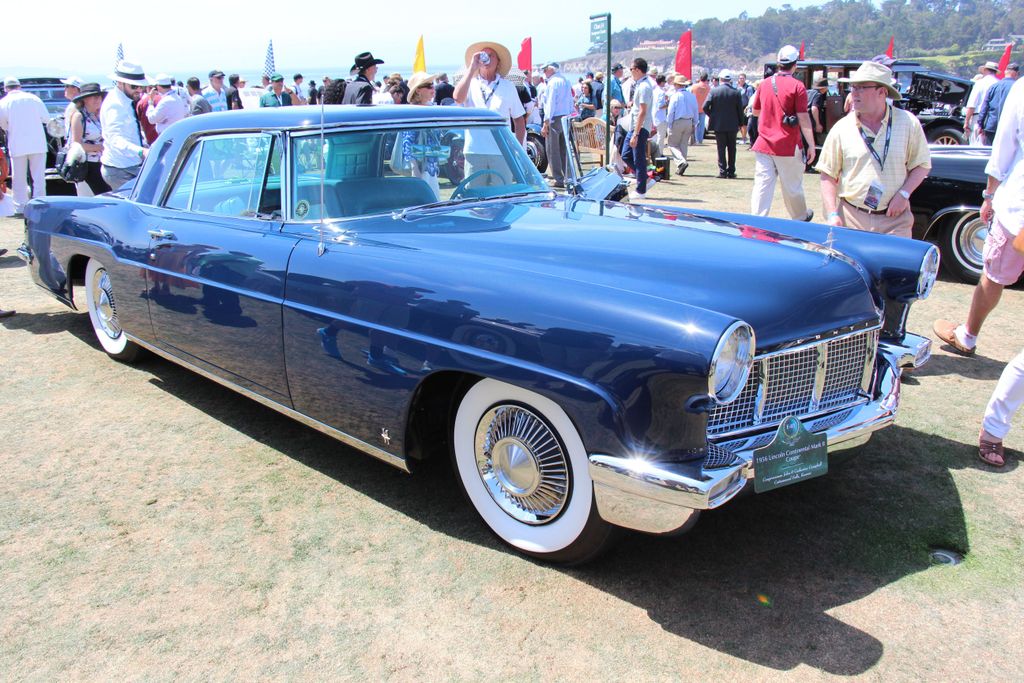
9. **1956 Lincoln Continental Mark II**In a daring move to challenge European luxury titans like Rolls-Royce, Ford conceived the 1956 Lincoln Continental Mark II as the epitome of American automotive refinement and exclusivity. This was not merely a car; it was a meticulously hand-built masterpiece, designed to cater to the most discerning clientele, including celebrities and top CEOs. Its very existence was a statement of unparalleled ambition and a quest for the pinnacle of luxury.
Every aspect of the Mark II was crafted for sublime elegance, from its understated, classy exterior to its sumptuously appointed interior, adorned with fine leather. It was packed with bespoke luxury features, including air conditioning, reflecting a commitment to driver and passenger comfort that was truly ahead of its time. Underneath its sophisticated shell, a hefty 6.0-liter V8 engine delivered a robust 300 horsepower, ensuring that its refined poise was matched by formidable power.
Despite its short production run and ultra-expensive price tag—a factor that limited its accessibility to all but the wealthiest—the Mark II remains enshrined as one of the most refined American cars ever built. Each of the approximately 3,000 units produced was a testament to bespoke craftsmanship, making it a highly prized collectible today. It stands as a vivid reminder of a time when American luxury sought to define itself on an international stage, pushing boundaries of what was considered opulent.
Car Model Information: 2024 Ford F-150 XLT
Caption: 1956 Continental Mark II
Predecessor: Lincoln Continental#First generation (1940–1942, 1946–1948)
Successor: Lincoln Continental Mark III,Lincoln Continental#Third generation (1958–1960)
Name: Continental Mark II
ModelYears: 1956–1957
Manufacturer: Ford Motor Company
Assembly: Ford Pilot Plant,Allen Park, Michigan
Related: Lincoln Futura
Layout: Front-engine, rear-wheel-drive layout
BodyStyle: hardtop
Engine: 368 cuin
Abbr: on
Transmission: Turbo-Drive 3-speed automatic
Wheelbase: 126.0 in
Length: 218.4 in
Width: 77.5 in
Height: 56.3 in
Weight: 5000 lb
Designer: John Reinhart (1953)
Categories: Articles with short description, Cars discontinued in 1957, Cars introduced in 1956, Commons category link from Wikidata, Ford Motor Company marques
Summary: The Continental Mark II is an ultra-luxury coupé that was sold by the Continental Division of Ford for the 1956 and 1957 model years. The first (and only) product line of Continental, the Mark II was developed as the worldwide flagship vehicle of Ford Motor Company. Developed as a successor for the 1939–1948 Lincoln Continental, the Mark II derived its nameplate from European manufacturing practice, denoting a second generation of the model family; Ford would later use this nomenclature for the Mark Series of flagship personal luxury cars.
As the most expensive American-produced automobile of the time, the Mark II was marketed against the Rolls-Royce Silver Cloud and the Bentley Continental. Produced solely as a two-door hardtop coupe, the Mark II was largely hand-assembled, sourcing its V8 powertrain from the standard Lincoln line.
Following the 1957 model year, the Mark II was discontinued, with the hand-built coupe replaced by a rebranded Lincoln. For 1969, Ford revived the Mark series chronology, debuting the (second) Continental Mark III coupe, leading to five successive generations, ending with the 1998 Lincoln Mark VIII coupe. Alongside its nameplate nomenclature, the Mark II debuted the integrated “Continental” spare-tire trunklid (in place of a bumper-mounted spare tire); each generation of the Mark Series (alongside the 1977–1980 Lincoln Versailles and 1982–1987 Lincoln Continental) used a variation of this feature. The Mark II also debuted the rectangular four-point star emblem, which remains in use on Lincoln-brand vehicles (in modified form) today.
The Mark II was assembled by Ford at Allen Park Body and Assembly in Allen Park, Michigan. Following the discontinuation of the Mark II, the facility was converted to the headquarters of the ill-fated Edsel brand. Today, it remains as the Ford Pilot Plant, where Ford pre-production vehicles are hand-assembled for testing and production development.
Get more information about: Continental Mark II
Buying a high-performing used car >>>
Brand: Lincoln Model: Continental Mark II
Price: $41,604 Mileage: 9,645 mi.
Read more about: Fuel for Regret: 14 Overhyped Vehicles That Drove Straight to Disappointment

10. **1951 Hudson Hornet**The 1951 Hudson Hornet roared onto the scene as a true beast of NASCAR, quickly establishing an formidable reputation for its track-dominating prowess. Its success wasn’t just about raw power; it was about an intelligent and revolutionary design known as the “step-down” chassis. This innovative engineering lowered the car’s center of gravity significantly, providing superior handling and an unparalleled advantage on the race circuits of the era.
The Hornet’s unique design meant that drivers sat lower within the car’s frame, imparting a sportier feel and allowing for exceptional cornering capabilities that often left competitors in its dust. Powering this champion was a robust inline-six engine, which, combined with the groundbreaking chassis, made it an absolute stunner both on the track and cruising down the street. It was a perfect fusion of mechanical ingenuity and aesthetic appeal.
For years, the Hudson Hornet dominated racing circuits, proving unequivocally that smart design and thoughtful engineering could consistently outrun the competition. Its legacy is one of a true pioneer, a testament to how innovative structural design could lead to unparalleled performance. This powerful machine not only secured its place in automotive history as a racing legend but also laid crucial groundwork for future advancements in chassis dynamics and handling.
Car Model Information: 1953 Hudson Hornet NASCAR Tribute
Caption: 1951 Hudson Hornet (4-door sedan)
Manufacturer: Hudson Motor Car Company,American Motors Corporation
Production: 1950–1957
Class: Full-size car,Muscle car
Layout: Front-engine, rear-wheel-drive layout
Name: Hudson Hornet
Categories: AMC vehicles, All accuracy disputes, All articles with dead external links, All articles with unsourced statements, Articles with dead external links from August 2024
Summary: The Hudson Hornet is a full-size car manufactured by Hudson Motor Car Company of Detroit, Michigan from 1951 until 1954, when Nash-Kelvinator and Hudson merged to form American Motors Corporation (AMC). Hudson automobiles continued to be marketed under the Hudson brand name through the 1957 model year.
The first-generation Hudson Hornets featured a functional “step-down” design with dropped floor pan and a chassis with a lower center of gravity than contemporary vehicles that helped the car handle well — an advantage for racing. The Hornet’s lower and sleeker look was accentuated by streamlined styling, sometimes called “ponton” styling.
Following the merger forming AMC in 1954, Hudson cars were built on the newer factory assembly line for Nash Statesman/Ambassador unibody chassis; therefore, all second-generation Hudson Hornets were restyled Nash automobiles that were badge engineered as Hudsons.
Get more information about: Hudson Hornet
Buying a high-performing used car >>>
Brand: Hudson Model: Hornet
Price: $53,000 Mileage: 22,072 mi.
Read more about: Unraveling America’s Automotive Ancestry: A Deep Dive into the Oldest Car Brands That Shaped a Nation’s Roads
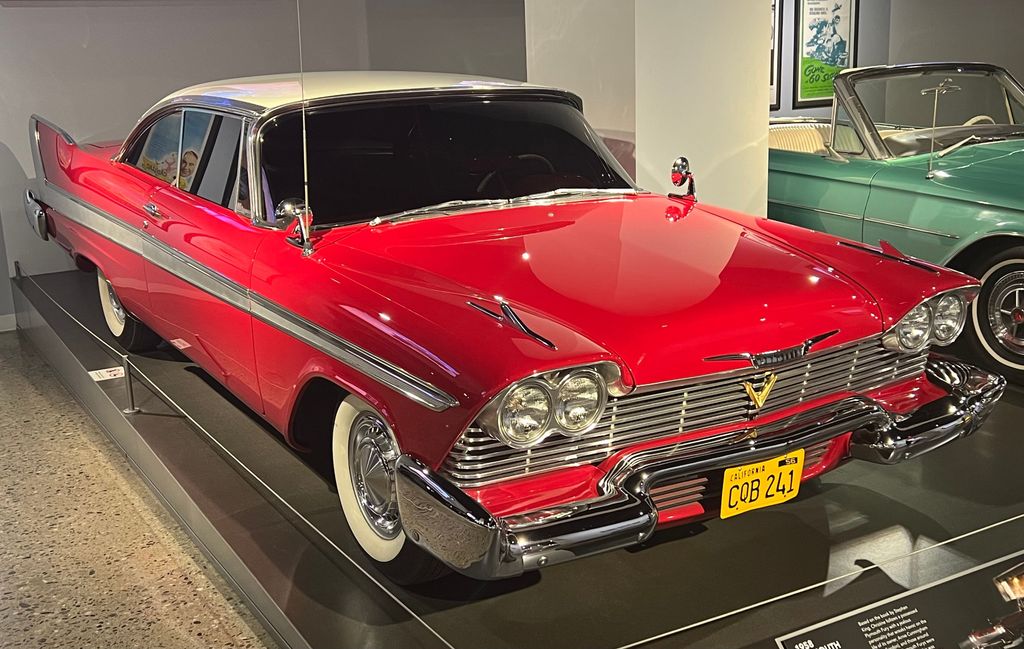
11. **1958 Plymouth Fury**Before its dramatic portrayal in Stephen King’s chilling novel, “Christine,” the 1958 Plymouth Fury had already carved out its own iconic status as a bold expression of 1950s automotive style and strength. With its distinctively sharp tailfins and gleaming golden trim, the Fury possessed an undeniable visual dynamism, appearing fast and aggressive even when completely stationary. It embodied the audacious spirit of an era unburdened by design restraint.
This wasn’t merely a vehicle designed for aesthetics; it packed a formidable punch under its sleek sheet metal. The Fury came equipped with the renowned Golden Commando engine and dual exhaust, a powertrain configuration that delivered ample speed and performance to match its assertive attitude. It was a car that didn’t just promise power through its looks; it delivered on that promise, making every drive an exhilarating experience.
The 1958 Plymouth Fury was a remarkable example of bold stylistic experimentation, characterized by its confident stance and unapologetic flamboyance. It encapsulated a pivotal moment in American car design where vehicles were becoming extensions of personal identity and aspirations. Its enduring presence in popular culture, coupled with its intrinsic engineering, firmly cements its legendary status among the most memorable cars of the decade.
Car Model Information: 1973 Plymouth Fury Custom Suburban
Name: Plymouth Fury
Caption: 1959 Plymouth Sport Fury
Manufacturer: Plymouth (automobile)
Aka: Plymouth Sport Fury (1959, 1962–1971),Plymouth VIP (1966–1969)
Production: 1958–1978
ModelYears: 1959–1978
Assembly: bulleted list
Class: Full-size,Mid-size,Full-size,Mid-size,Full-size,Mid-size
Layout: FR layout
Predecessor: Plymouth Belvedere,Plymouth Plaza,Plymouth Savoy
Successor: Plymouth Gran Fury,Plymouth Gran Fury
Sp: us
Categories: 1960s cars, 1970s cars, All articles needing additional references, Articles needing additional references from December 2018, Articles with short description
Summary: The Plymouth Fury is a model of automobile that was produced by Plymouth from 1955 until 1989. It was introduced for the 1956 model year as a sub-series of the Plymouth Belvedere, becoming a separate series one level above the contemporary Belvedere for 1959. The Fury was a full-size car from 1959 until 1961, then a mid-size car from 1962 until 1964, again, a full-size car from 1965 through 1974, and again, a mid-size car from 1975 through 1978. From 1975 until 1977, the Fury was sold alongside the full-size Plymouth Gran Fury. In 1978, the B-body Fury was the largest Plymouth, and by 1979, there was no large Plymouth. This product gap was filled in 1980 with the R-body Gran Fury, followed by the M-body Fury in 1982. Production of the last V8, RWD Plymouth Fury ended at the Kenosha Main assembly plant in Kenosha, WI, on December 23, 1988. Unlike its sibling brand, Dodge, Plymouth would not live to see the resurgence of the large, V8/RWD sedan.
Get more information about: Plymouth Fury
Buying a high-performing used car >>>
Brand: Plymouth Model: Fury
Price: $21,500 Mileage: 91,485 mi.
Read more about: Unleash the Beasts: 14 Legendary American Cars That Roared Through the 1960s, Forging an Unforgettable Automotive Decade
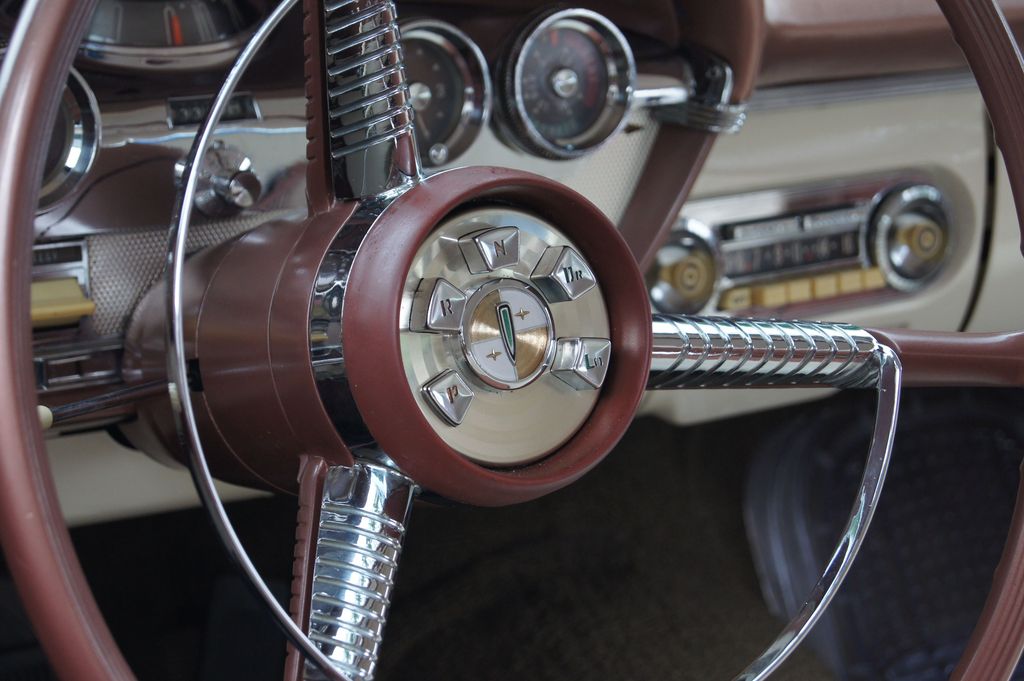
12. **1958 Edsel Citation**The 1958 Edsel Citation remains one of the most discussed automobiles of the 1950s, standing out not for its commercial triumph, but for its incredibly bold attempt at automotive innovation and unique styling. Launched with ambitious goals by Ford, the Edsel aimed to carve a distinct niche in the mid-price market, embodying a spirit of daring experimentation that defined a segment of the decade’s design ethos. It was a vehicle that truly strove to differentiate itself from the prevailing currents.
At the heart of its distinctiveness was the controversial yet unforgettable horse-collar grille, a design element that instantly made the Edsel recognizable, if not universally loved. Beyond its polarizing frontal styling, the Citation boasted a suite of futuristic features for its time, including an innovative push-button transmission and a highly modern dashboard. These elements were all part of an concerted effort to present a vehicle that looked and felt like a glimpse into the future.
While sales ultimately fell short of the high expectations set by Ford, leading to its eventual discontinuation, the Edsel remains an iconic symbol of 1950s ambition and risk-taking in car design. Today, collectors deeply appreciate it for its rarity, its unapologetic retro-futuristic charm, and the profound lessons it offers in automotive history. It serves as a potent reminder that even ideas that don’t achieve immediate success can leave a lasting and significant cultural footprint.
Car Model Information: 1958 Edsel Citation
Name: Edsel Citation
Manufacturer: Edsel
ModelYears: 1958
Assembly: Wayne Stamping & Assembly,Wayne, Michigan,Somerville Assembly,Somerville, Massachusetts,Los Angeles Assembly,Pico Rivera, California,Oakville Assembly,Oakville, Ontario
Class: Full-size car
Successor: Edsel Corsair
BodyStyle: convertible (car)
Engine: 410 cuin
Abbr: on
Transmission: Cruise-O-Matic#FX/MX
Weight: convert
Wheelbase: 124 in
Length: Convert
Width: Convert
Related: Edsel Corsair,Mercury Turnpike Cruiser,Mercury Montclair,Mercury Monterey
Chassis: Body-on-frame
Categories: All articles with unsourced statements, Articles with short description, Articles with unsourced statements from August 2024, Cars discontinued in 1958, Cars introduced in 1958
Summary: The Edsel Citation is an automobile that was produced by the Edsel division of Ford for the 1958 model year. The flagship Edsel model line, the Citation was offered as two- and four-door hardtop sedans as well as a two-door convertible. Slotted above the Corsair, the exterior of the Citation was distinguished by additional stainless steel trim and a gold-anodized aluminum cove panel (emulating the Mercury Turnpike Cruiser).
In total, 9,299 Citations were produced by Edsel, of which 930 were convertibles, making the Citation convertible the second-rarest 1958 Edsel (following the nine-passenger Edsel Bermuda station wagon with 779 produced).
Get more information about: Edsel Citation
Buying a high-performing used car >>>
Brand: Edsel Model: Citation
Price: Not Priced Mileage: 68,904 mi.
Read more about: Beyond Nostalgia: 14 Classic ‘Boomer’ Cars Gen Z Drivers Are Steering Clear Of (And Why!)

13. **1955 Mercedes-Benz 300SL Gullwing**Shifting our focus across the Atlantic, the 1955 Mercedes-Benz 300SL Gullwing emerged as an international icon, celebrated globally for its revolutionary engineering and breathtaking design. Its most defining characteristic, the distinctive upward-opening “gullwing” doors, was not merely a stylistic flourish but a direct result of its innovative tubular chassis, originally designed for racing. This car was a harmonious blend of cutting-edge technology and stunning aesthetic appeal, setting new benchmarks for sports car excellence.
Underneath its sleek, aerodynamic body, the 300SL was powered by the world’s first production fuel-injected inline-six engine, a groundbreaking innovation that contributed to its formidable performance. This technological marvel, coupled with its lightweight construction, allowed the Gullwing to deliver exhilarating speed and precise handling, making it a formidable competitor on international race tracks and a thrilling machine on the open road. It was truly an engineering tour de force.
Combining its track-proven prowess with an undeniable aura of luxury, the 1955 Mercedes-Benz 300SL Gullwing quickly became one of the most desirable and collectible cars of all time. It demonstrated that refined luxury could coexist with blistering performance and audacious design, influencing generations of sports cars. Its enduring legacy is a testament to its visionary conception, forever cementing its place as a truly legendary vehicle of its era and beyond.
Car Model Information: 2023 Lincoln Navigator Reserve
Name: Mercedes-Benz 300 SL
Caption: 300 SL roadster and gullwinged coupé
Manufacturer: Mercedes-Benz
Production: Mercedes-Benz 300 SLR#Uhlenhaut Coupé
Assembly: Stuttgart
Designer: Friedrich Geiger
Class: Sports car,Grand tourer
BodyStyle: coupé,Roadster (automobile)
Platform: Coupé W198 I, Roadster W198 II
Related: Mercedes-Benz 190 SL
Layout: FR layout
Engine: 2996 cc
Abbr: off
Transmission: Manual transmission
Wheelbase: 2400 mm
Length: 4520 mm
Width: 1790 mm
Height: 1300 mm
Weight: 1500 kg
Predecessor: Mercedes-Benz W194
Successor: Mercedes-Benz W113
Doors: Gull-wing door
Categories: 1960s cars, 24 Hours of Le Mans race cars, All Wikipedia articles needing clarification, All Wikipedia articles written in American English, All articles with vague or ambiguous time
Summary: The Mercedes-Benz 300 SL (chassis code W 198) is a two-seat sports car that was produced by Mercedes-Benz from 1954 to 1957 as a gullwinged coupé and from 1957 to 1963 as a roadster. The 300 SL traces its origins to the company’s 1952 racing car, the W194, and was equipped with a mechanical direct fuel-injection system that significantly increased the power output of its three-liter overhead camshaft straight-six engine.
The 300 SL was capable of reaching speeds of up to 260 km/h (162 mph), earning it a reputation as a sports car racing champion and making it the fastest production car of its time. The car’s iconic gullwing doors and innovative lightweight tubular-frame construction contributed to its status as a groundbreaking and highly influential automobile.
The designation “SL” is an abbreviation of the German term super-leicht, meaning “super-light”, a reference to the car’s racing-bred lightweight construction. The 300 SL was introduced to the American market at the suggestion of Max Hoffman, Mercedes-Benz’s United States importer at the time, who recognized the potential demand for a high-performance sports car among American buyers. The Mercedes-Benz 300 SL remains a highly sought-after classic car and is celebrated for its performance, design, and technological advancements.
Get more information about: Mercedes-Benz 300 SL
Buying a high-performing used car >>>
Brand: Mercedes-Benz Model: 300SL Gullwing
Price: $66,995 Mileage: 23,920 mi.
Read more about: The Unseen Value: 9 Classic Cars That Demand Storage Over the Open Road for True Enthusiasts
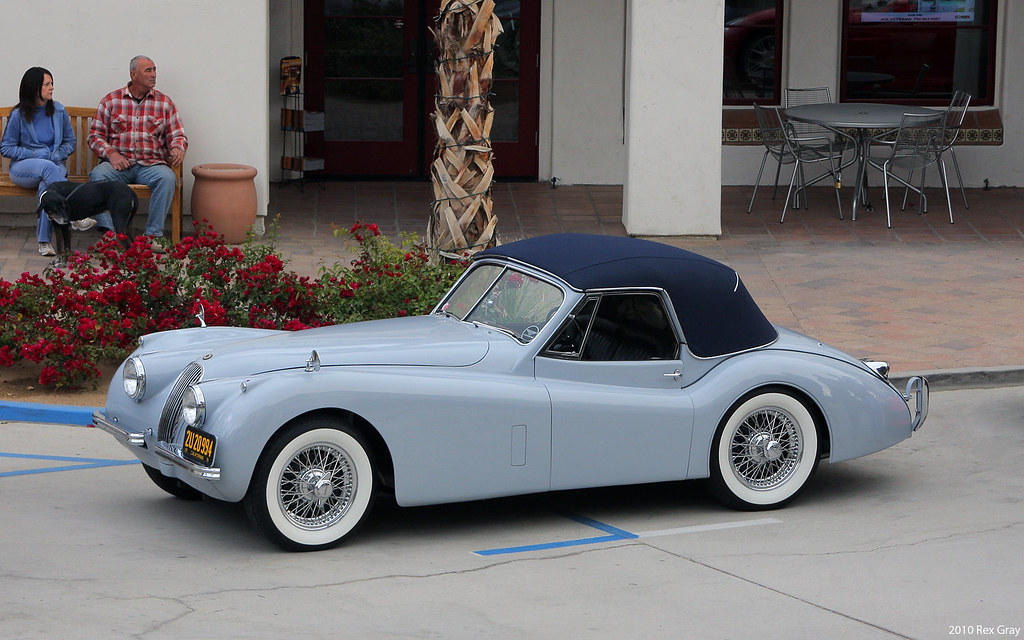
14. **1954 Jaguar XK120**The 1954 Jaguar XK120 arrived as a definitive statement of performance and beauty, setting new, lofty standards in the automotive world and solidifying Britain’s presence in the global sports car arena. Its name, a nod to its remarkable top speed of 120 mph, proudly proclaimed its status as the fastest production car of its time. This achievement captivated enthusiasts and propelled the XK120 into the realm of instant legends, showcasing the potency of British engineering.
Characterized by its exquisitely sleek and aerodynamic body, the XK120 exuded an irresistible allure that perfectly blended elegance with raw power. Its graceful lines and low-slung profile made it an immediate favorite among driving enthusiasts who sought not just speed, but a profound connection with the road. The attention to detail in its design and its exceptional capabilities truly set it apart, making it a benchmark for beauty and performance.
More than just a fast car, the XK120 became a symbol of post-war British automotive resurgence and a cherished icon of its era. It continues to inspire awe and admiration today, lauded for its timeless design and its pivotal role in establishing Jaguar’s reputation for producing high-performance, luxurious sports cars. This machine represented the perfect marriage of form and function, a true testament to its enduring impact.
Read more about: Unveiling Automotive Royalty: The Definitive Ranking of 14 Coolest Roadsters by Auction Price for the Ultimate Enthusiast
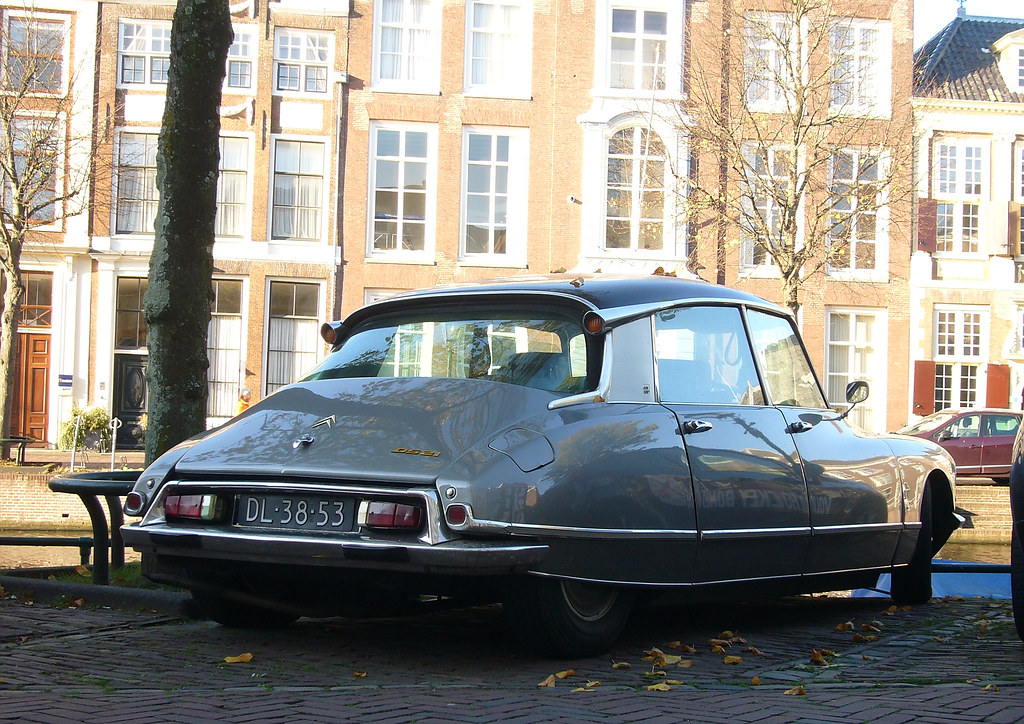
15. **1955 Citroën DS**The French automotive industry delivered its own distinctive brand of marvel to the world at the 1955 Paris Motor Show with the unveiling of the Citroën DS. This car was a departure from conventional design, offering a “different kind of amazing” that stood in stark contrast to the flamboyant American classics, the spirited Italian stallions, or the stately British models of the period. It represented a fresh, audacious approach to automotive engineering and aesthetics.
The DS’s groundbreaking design was immediately recognized for its radical aerodynamic profile and futuristic lines, which truly distinguished it from anything else on the road. Its unique appearance wasn’t merely cosmetic; it was a testament to the comprehensive innovative spirit that Citroën brought to the world. The vehicle signaled a new philosophy, emphasizing ergonomic comfort, safety, and a distinct visual identity that captivated audiences worldwide.
This iconoclastic approach cemented the Citroën DS as a landmark in automotive history. It was a masterclass in challenging established norms, proving that innovation could come in many forms and from many corners of the globe. Its lasting impact stems from its courage to be different, influencing designers and engineers for decades to come and showcasing the enduring power of bold stylistic experiments and pioneering thought. The DS remains a testament to what happens when imagination is given free rein.
Read more about: What Happened to Them? A Deep Dive into 14 Iconic European and American Cars That Disappeared from Production
The 1950s, without question, stand as a testament to an era when automotive design truly blossomed into an art form, giving rise to machines that transcended mere utility. From the dramatic flair of American tailfins to the engineering brilliance of European sports cars, this decade delivered an unforgettable collection of legends that defined an entire generation. These aren’t just vehicles of the past; they are enduring symbols of ingenuity, luxury, speed, and unbridled ambition, continuing to inspire awe and admiration in car lovers worldwide. They are the golden threads woven into the rich tapestry of automotive history, forever celebrated as monuments to style and freedom on four wheels.


